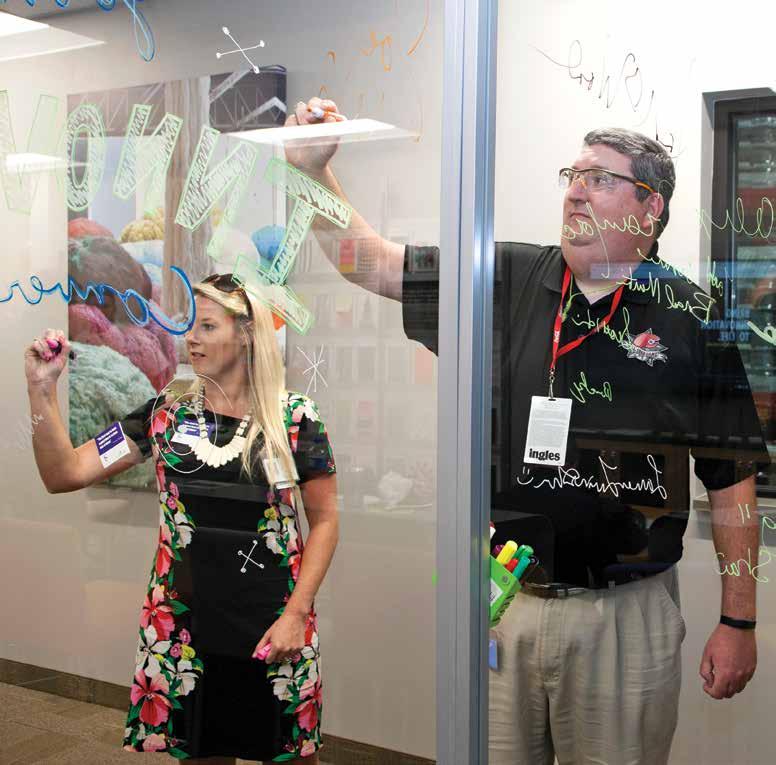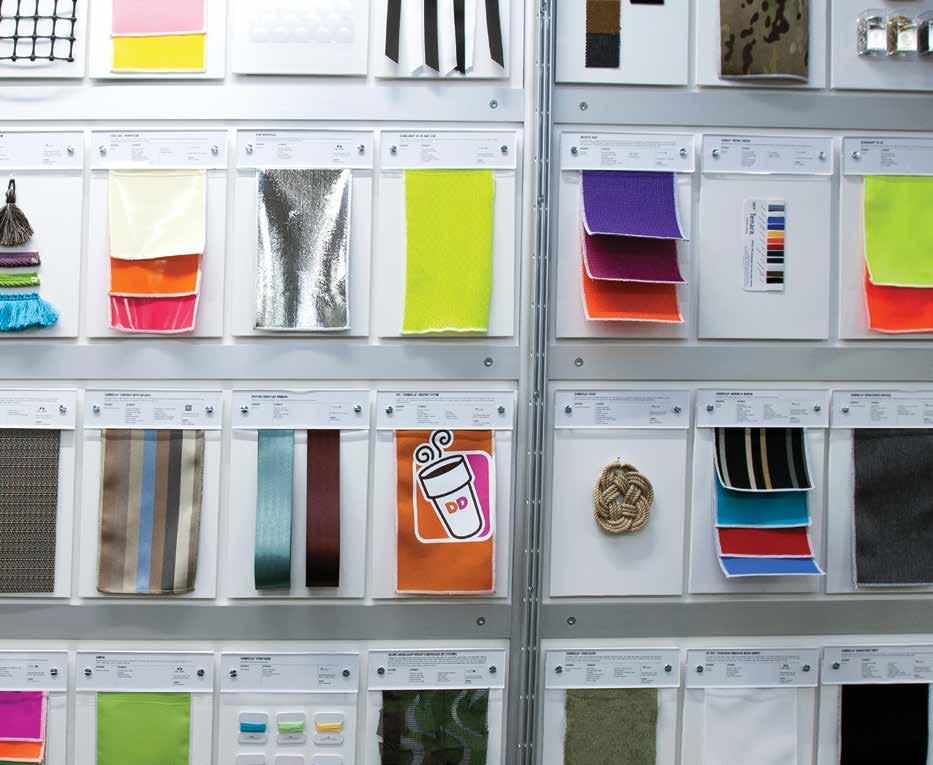
3 minute read
HOW TO ‘MAKE SPACE’ FOR CREATIVITY AND INNOVATION
from Raven Issue No. 25
According to Scott Doorley, creative director of Stanford University’s d.school, and Scott Witthoft, d’Arbeloff fellow 2008–2009 and lecturer at the d.school, space is something malleable that businesses can use to encourage collaboration, creativity and innovation in the workplace. We sat down with Doorley and Witthoft to get a better understanding of how businesses can use office space, conference rooms and seating arrangements to impact employee engagement and influence the proliferation of new ideas.
HOW DOES SPACE IMPACT BEHAVIOR?
Advertisement
WITTHOFT: There’s almost a switch flipping on that occurs when you walk in and recognize a space and its impact on you. You can’t stop seeing it. It’s like walking into a really great restaurant and thinking, “Wow this place is great. It smells in this particular way, it looks this particular way, I feel this particular way in this space.”
Different spaces make you feel different things. Next time you host a meeting, think about how you can create a space that has the same impact on how you feel as when you walked into that great restaurant. Simple tweaks to the setting or the atmosphere can help.
DOORLEY: It’s amazing how people will go to such lengths to create a great atmosphere when planning for a party—you light candles, you play music, you decide who sits next to each other. You do that for a reason because you know it’s going to create a good environment, it will open people up so they can have a good time and have great conversations. And you can do the same thing in your office.
WHAT IS DESIGN THINKING AND HOW CAN BUSINESSES APPLY IT TO SOLVE EVERYDAY PROBLEMS?
DOORLEY: There are three facets of design thinking that businesses can use to solve everyday problems. First, reframe the problem by looking at the human issues at play. Second, be very intentional and specific about what and who you are designing for; frame the problem in a really tight way so it is direct and the things that aren’t useful get pushed aside. Third, iterate your way to a solution by trying ideas and soliciting feedback, and then trying it again.
WITTHOFT: People often don’t realize that they already know how to use design thinking and that they use it on a daily basis. A wedding rehearsal is a great example of using design thinking to ensure that a really high-resolution event turns out the way you want, simply by going through it once before it happens. How is that any different from launching a product or giving a presentation? If you take the practicing mentality of your daily life and apply it to work, you are effectively applying design thinking to your business life.
WHY IS IT IMPORTANT TO MAKE SPACE FOR CREATIVITY?
DOORLEY: In New York in the 1970s, a man named William H. Whyte was tasked with researching why certain plazas in urban spaces were not being utilized. After literally months of research, he came up with this very simple finding that the most utilized plazas had places to sit; thus, his big insight was that “people will sit where there are places to sit.” It’s almost ridiculous, except when you look at the plazas and realize they were actually designed without any places to sit, so of course, no one was going to stay there.
It’s the same with creativity. If there’s no place to share ideas, people won’t share ideas. If there’s no safe place to have a conversation where you can be very open and collaborative with a colleague, people won’t have those conversations. Space both reinforces behavior and suggests possible behavior. If you are trying to get people to unlock their own natural creativity, you have to give them a space to do that.
Four Simple Ways To Make Space For Creativity In Your Office

You don’t have to have a million-dollar budget to implement Witthoft and Doorley’s inspired ideas. Here are a few small tweaks to get you started today.
PUT YOUR IDEAS DOWN ON PAPER. Physically embodying an idea—getting it out of your head and onto some sort of work surface—opens up the idea and makes it visible for someone else’s interpretation. This exercise can help businesses find solutions to problems through collaboration—whether it involves new spaces, meetings, events, products or services.
ADD VERTICAL WORK SURFACES. Simple and inexpensive, vertical dry erase work surfaces encourage creative thinking and innovation through the sharing of ideas. Vertical dry erase surfaces allow employees to “work out loud,” emphasizing that ideas aren’t meant to be kept within, nor are they as precious as we think. Rather, ideas are meant to be shared, altered and eventually erased, either because a new idea is better or because the problem has been solved.
PROTOTYPE NEW IDEAS AND BEHAVIORS. You don’t have to wait for a building overhaul to try out new ideas in your current workspace. Prototyping spaces and ideas can help companies figure out what really works best for their employees before investing in office renovations.
START SMALL. Start by taking over an unused conference room and making small tweaks that encourage the behaviors you want from your employees. If you want to encourage idea sharing from everyone, no matter his or her title, try removing the conference room table and placing the chairs in a circle, so everyone is literally on the same level. If you want employees to feel more relaxed and open, try playing music before a meeting. Simple tweaks can create a positive and cascading effect on behavior.









